People
In Pictures: See a Curator’s Harrowing Journey From War-Torn Kyiv to Venice to Install the Art for Ukraine’s National Pavilion
Artist Pavlo Makov's installation has now safely arrived to the Venice Biennale.

Artist Pavlo Makov's installation has now safely arrived to the Venice Biennale.

Katya Kazakina

On February 24, the day Russia attacked Ukraine, Maria Lanko, a co-owner of the Naked Room Gallery in Kyiv, woke up to the sounds of explosions. It was a shock, but not a surprise for Lanko and her community.
Her car had a full tank of gas. Inside the trunk were three boxes filled with bronze funnels, the main components of the installation Fountain of Exhaustion by artist Pavlo Makov, who will represent Ukraine at its national pavilion at the upcoming Venice Biennale.
Lanko, a co-curator of the pavilion, understood that, whatever happened, “I could just take them to Venice, and anyway we will be present there even if it was a symbolic presence,” she said at the Talking Galleries New York conference last week. “At least there will be a part of the work that’s the core of it.”
That night, Lanko hit the road and drove west.
Her journey took three weeks, during which unimaginable things happened back home. “February 24 is the end of history,” she said. “The end of the end of history. We started a new calendar that day.” On the 21st day of the new calendar, Lanko arrived in Venice, soon reuniting with Markov. His installation would become a reality after all—for the first time and almost three decades after its conception, in 1994.
The fountain is a kinetic sculpture consisting of 78 bronze funnels, arranged in the form of a pyramid. The water poured into the top funnel divides into two streams, feeding the funnels below. “Only a few drops reach the bottom, symbolizing exhaustion on a personal and global level,” the curators said in a press release.
Below are the images of the project and Lanko’s journey from Kyiv to Venice.

“Fountain of Exhaustion” by Pavlo Makov, to be presented at the Venice Biennale next week. Makov’s main subject is always the place, Lanko said, “and his place for more than 30 years has been Kharkiv.” In the 1990s, the city was deteriorating. Once there was a flood, and at the same time, paradoxically, water pipes broke down and there was no running water in the city for a couple of weeks. The work is a “paradoxical fountain. It exhausts itself,” she said. Courtesy: Ya Gallery Art Center.
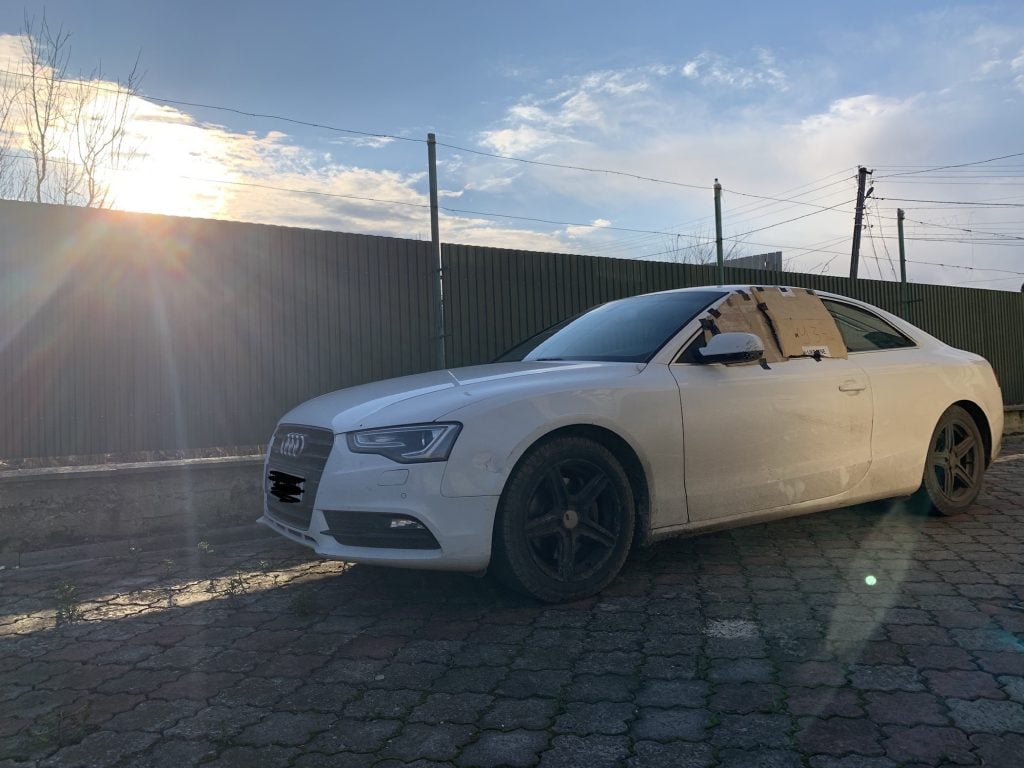
Lanko’s car window broke along the way and it was impossible to fix it. “The road was very complicated, more or less jammed all the time. The accommodation was almost impossible to find,” she said. “I was sleeping in very, very cold houses, with random people.” Courtesy: Maria Lanko.
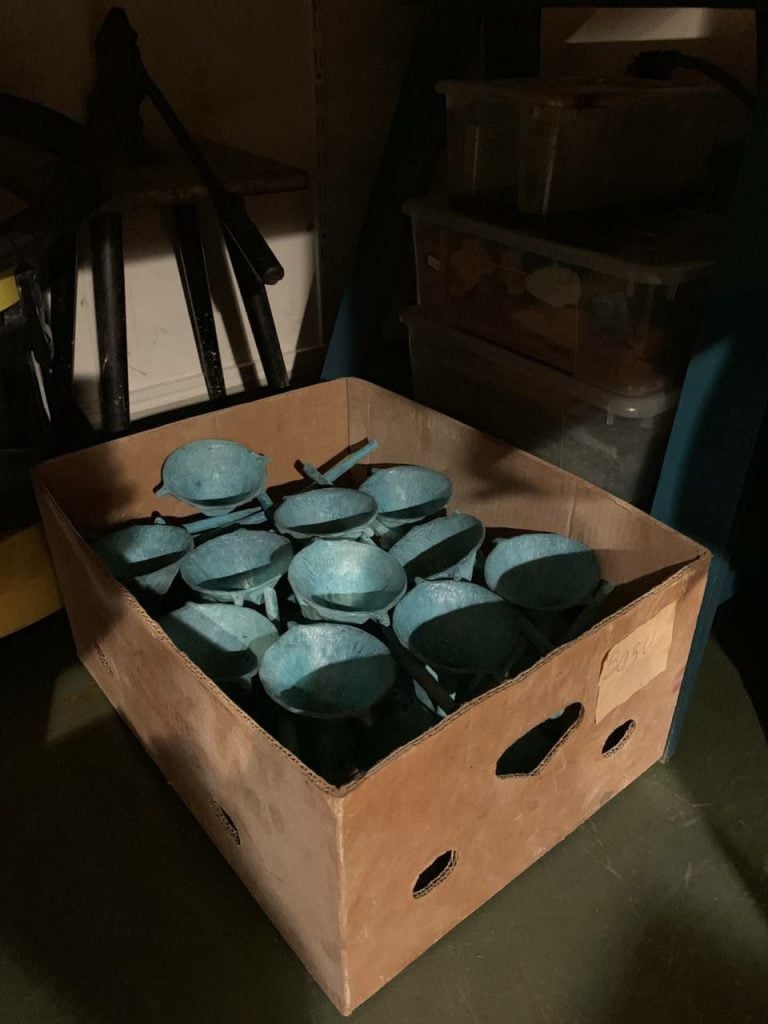
The bronze funnels boxed up and awaiting transportation to Venice. They were supposed to be finished on February 24 but, luckily, got completed two weeks earlier. Courtesy: Maria Lanko.
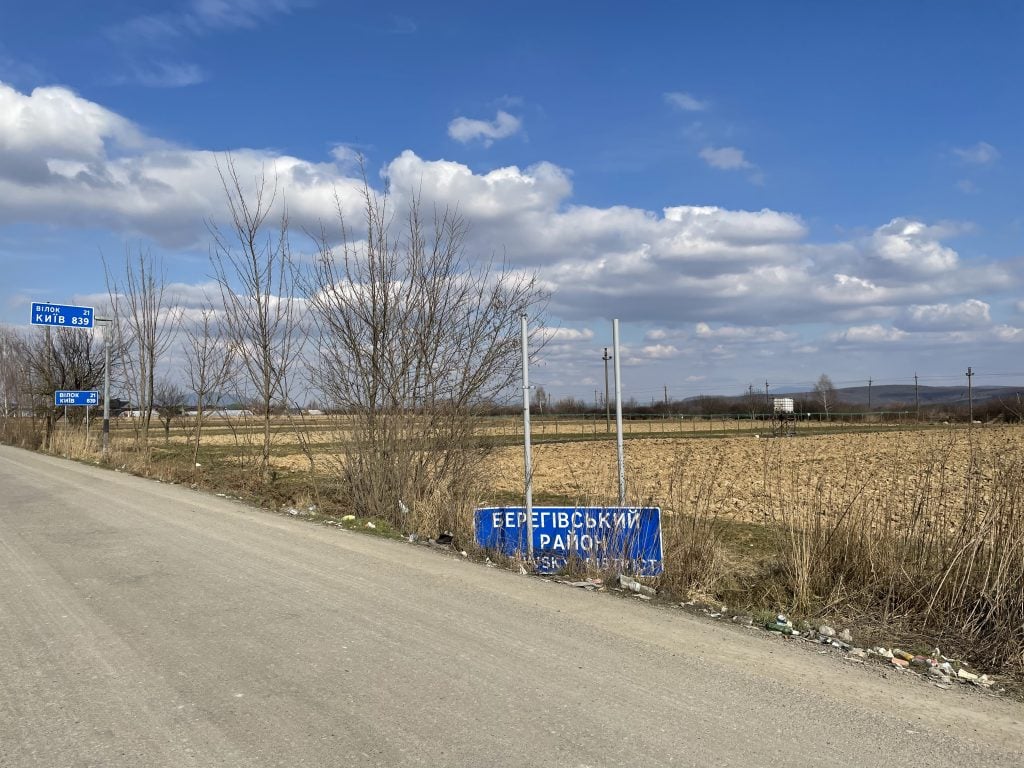
Approaching the Romanian border, 521 miles from Kyiv. As millions of Ukrainian refugees flocked west, Lanko spent a week just getting to the border. Courtesy: Maria Lanko.

Ukrainian pavilion co-curators Lizaveta German (left), chief editor of IST Publishing Borys Filonenko, artist Pavlo Makov, and Maria Lanko. Lanko. Photo: Eugene Nikiforov.
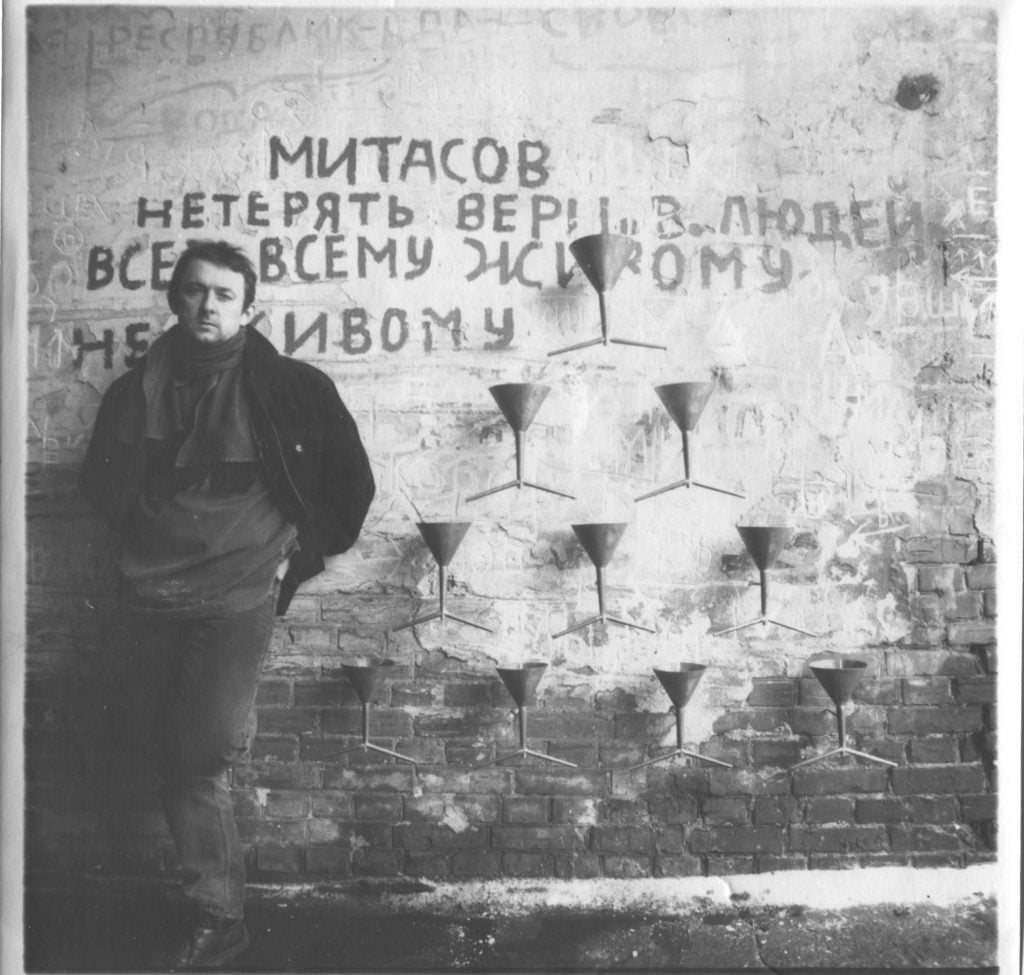
Artist Pavlo Makov by his “Fountain of Exhaustion” in 1996. © Pavlo Makov. Courtesy: Maria Lanko
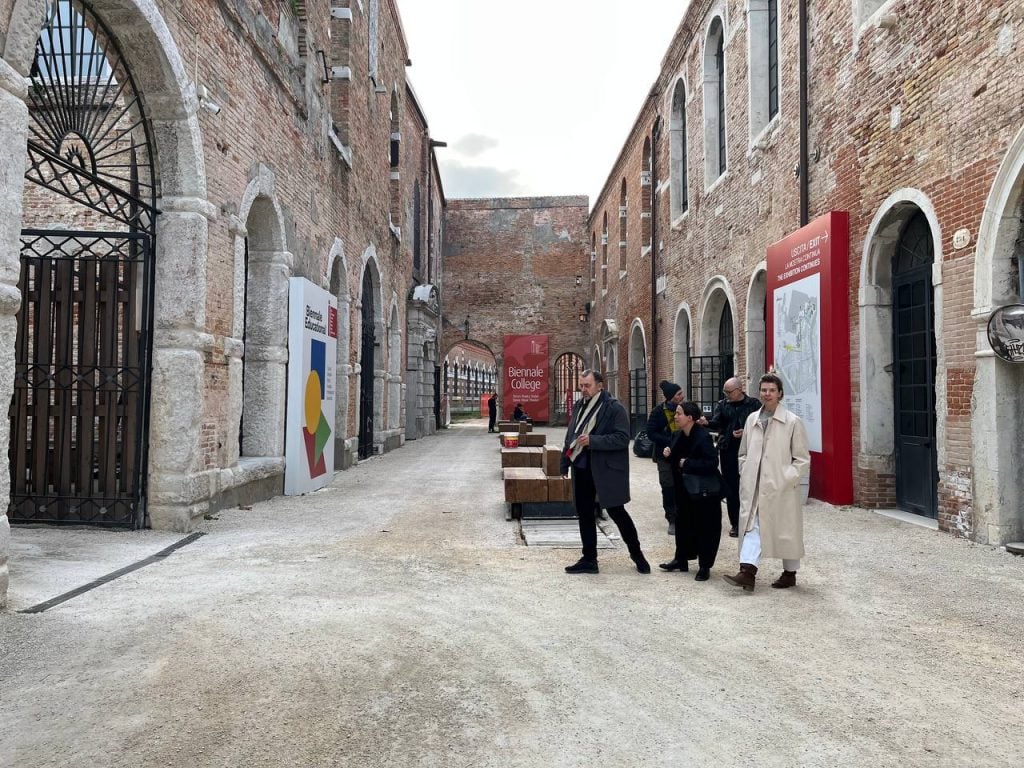
The pavilion team in the Arsenale di Venezia in late March, where the Ukrainian pavilion will be installed. As Lanko drove to Venice, she received a call from Tecnolegno Allstimenti, a Milan-based firm, offering help with outstanding production of the work. Photo: Iryna Miroshnikva.